#Raja Hindustani
Explore tagged Tumblr posts
Text


Karishma Kapoor in Raja Hindustani (1996)
#bollywood#bollywood2#karishmakapoor#karishma kapoor#karisma kapoor#raja hindustani#rajahindustani#mine
124 notes
·
View notes
Text
Pardesi Pardesi Lyrics - Raja Hindustani | Sad Version
#PardesiPardesi #RajaHindustani #OldISGold #NadeemShravan #Sameer #SureshWadkar $Bela

View On WordPress
1 note
·
View note
Text
youtube
Kitna Pyaara Tujhe Rab Ne Banaya |Alka Yagnik Udit Narayan| Raja Hindustani |90s romantic hit songs, PLEASE SUPPORT THE CHANNEL AND SUBSCRIBE PLEASE. LOVE YOU ALL FROM ASTRAL LOFI VIBES.
#LOFI SONGS#bollywood hindi songs#bollywood songs#latest bollywood songs#raja hindustani songs#kitna pyara tumhe rab ne banaya#love songs#love mashup#romantic love mashup#astral lofi vibes#mind relax lofi songs#Youtube
1 note
·
View note
Text
Exploring the Vibrant World of Hindustani Cinema: A Kaleidoscope of Culture, Art, and Storytelling
Hindustani cinema, often referred to as Bollywood, is a vibrant tapestry of culture, art, and storytelling that has captivated audiences worldwide for decades. Rooted in the rich traditions of Indian culture, Hindustani movies offer a unique blend of melodrama, music, dance, and larger-than-life narratives that have left an indelible mark on global cinema. In this article, we embark on a journey to explore the essence of Hindustani cinema, delving into its history, evolution, and enduring appeal.
Origins and Evolution: The roots of Hindustani cinema can be traced back to the early 20th century, with the screening of India's first silent feature film, "Raja Harishchandra," directed by Dadasaheb Phalke in 1913. This landmark moment marked the beginning of a new era in Indian filmmaking, paving the way for the emergence of an industry that would eventually become one of the largest in the world.
In the following decades, Hindustani cinema underwent a rapid evolution, embracing sound technology with the release of "Alam Ara" in 1931, India's first talking picture. This innovation revolutionized the medium, allowing filmmakers to incorporate dialogue, music, and song into their narratives, shaping the distinctive style of Bollywood movies that we know today.
The Golden Age: The post-independence period witnessed the emergence of what is often referred to as the Golden Age of Hindustani cinema. Filmmakers like Satyajit Ray, Raj Kapoor, Guru Dutt, and Bimal Roy crafted masterpieces that not only entertained but also challenged societal norms and explored complex themes with depth and nuance.......watch more.
Movies such as "Pather Panchali," "Awaara," "Pyasa," and "Do Bigha Zamin" garnered critical acclaim both at home and abroad, earning Indian cinema international recognition and respect. These films transcended linguistic and cultural barriers, resonating with audiences around the world and cementing the legacy of Hindustani cinema on the global stage.
The Rise of Bollywood: The 1970s and 1980s witnessed the rise of the Bollywood masala film, characterized by its formulaic blend of romance, action, comedy, and music. Filmmakers like Yash Chopra, Manmohan Desai, and Subhash Ghai created larger-than-life spectacles that catered to the masses, introducing iconic characters, memorable dialogues, and timeless songs that became ingrained in the collective consciousness of Indian audiences.
During this period, stars like Amitabh Bachchan, Dharmendra, Sridevi, and Rekha rose to superstardom, becoming cultural icons whose influence extended far beyond the silver screen. Their larger-than-life personas and charismatic performances defined an era and contributed to the enduring popularity of Bollywood cinema.
Global Reach and Recognition: In recent years, Hindustani cinema has experienced unprecedented growth and recognition on the global stage. Films such as "Lagaan," "Slumdog Millionaire," and "3 Idiots" have garnered widespread acclaim at international film festivals and award ceremonies, showcasing the diversity and talent of Indian filmmakers to audiences around the world.
The success of these films has not only opened doors for Indian cinema in international markets but has also sparked a renewed interest in Indian culture and storytelling on a global scale. With streaming platforms like Netflix and Amazon Prime offering a vast array of Bollywood movies to a worldwide audience, Hindustani cinema has never been more accessible or influential.
Challenges and Opportunities: Despite its global success, Hindustani cinema continues to grapple with challenges, including piracy, censorship, and the dominance of formulaic storytelling. However, filmmakers are increasingly pushing boundaries and exploring new avenues of creativity, tackling taboo subjects, and experimenting with narrative techniques to engage audiences in fresh and innovative ways.
Moreover, the rise of independent cinema and digital platforms has provided a platform for emerging filmmakers to showcase their talent and reach audiences directly, bypassing the traditional studio system. This democratization of filmmaking has led to a proliferation of diverse voices and perspectives within the industry, enriching the cinematic landscape and offering new opportunities for artistic expression.
The Future of Hindustani Cinema: As we look to the future, the possibilities for Hindustani cinema seem limitless. With advancements in technology, changing audience preferences, and a growing global market, Indian filmmakers are poised to continue pushing boundaries and redefining the cinematic landscape.
From small-budget independent films to big-budget blockbusters, from traditional storytelling to experimental narratives, Hindustani cinema remains a dynamic and evolving art form that reflects the complexities and contradictions of Indian society. As long as there are stories to be told and dreams to be shared, the magic of Bollywood will continue to captivate audiences around the world, bridging cultures and inspiring generations to come.
Conclusion: In conclusion, Hindustani cinema occupies a unique and cherished place in the pantheon of global cinema. From its humble beginnings over a century ago to its current status as a cultural juggernaut, Bollywood has captivated audiences with its colorful characters, melodious music, and larger-than-life narratives.
As the industry continues to evolve and adapt to changing times, one thing remains constant: the enduring appeal of Hindustani cinema as a celebration of life, love, and the human experience. Whether you're a casual moviegoer or a die-hard fan, there's something magical about Bollywood that transcends borders and brings people together in joyous celebration of the art of storytelling.
2 notes
·
View notes
Text
Old Superhit Bollywood Movies' Inflation Adjusted Box Office Collection Equivalent To 2023-24
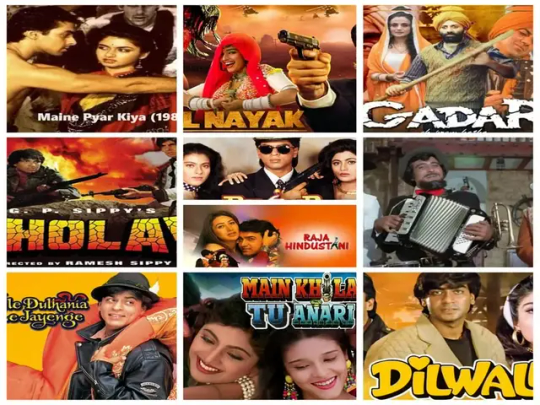
Old Superhit Bollywood Movies' Inflation Adjusted Box Office Collection Equivalent To 2023-24: In 2023, almost every movie set a new record at the box office and raised the bar of competition to a new height. Some of the top grossers of Bollywood in 2023 are Pathaan, Jawaan, Gadar 2, Animal, Tiger 3, Fukrey 3, Rocky Aur Rani Kii Prem Kahaani, Satya Prem Ki Katha, Dunki, and Salaar. In the ever-evolving landscape of Bollywood, the most common measure to verdict if a film is a hit or flop, it has to be the box office collection. Did you ever think about what would be the box office collection of Bollywood old superhit movies if they were released in 2023 or 2024?
List of 10 Superhit Bollywood Films' Inflation Adjusted Box Office Collection
It is intriguing to think or imagine the colossal success that some of your favorite superstar's old superhit films would achieve if they were released in the current cinematic era of 2023-24. There is no doubt that the timeless classical movies which once captivated audiences with their compelling narratives and iconic performances, still have the potential to redefine success at the box office. Imagine what would be the fate of legendary films like "Sholay," "Dilwale Dulhania Le Jayenge," or "Maine Pyar Kiya" if they were released in theaters now? You may also like: Did You Notice Spelling Mistakes In Bollywood Movies Titles As time has changed and the taste of the audience also altered it is a little bit debatable would these films attract the audience to the ticket counters in 2023. Thus, we have discussed Bollywood Old Superhit Movies box office collections equivalent to their box office collections in 2023. We took 10 old blockbuster films to discuss their hypothetical or inflation adjusted box office collection. 1. Maine Pyar Kiya (1989)
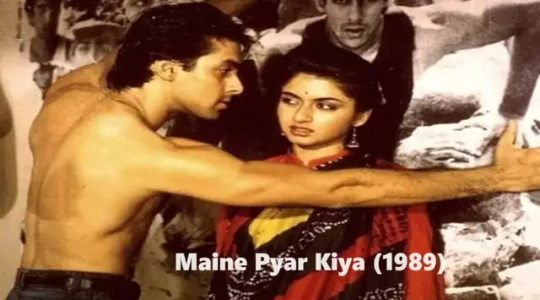
Maine Pyar Kiya was released on December 29, 1989, with limited screen counts. Eventually, it became Salman Khan's illustrious career's first blockbuster film which racked up INR 23 Crore in India and INR 27.5 Crore worldwide, to become an all-time blockbuster. Maine Pyar Kiya's INR 28 crore box office collection in 1998 is equivalent to Rs 500 crore in 2023. 2. Sholay (1975)
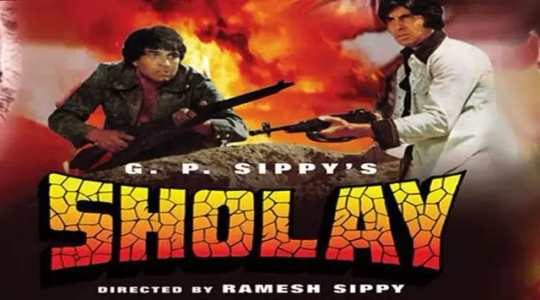
It is one of the most iconic films of Bollywood. Sholay was released in 1975. However, Sholay has been re-released multiple times as Sholay 3D. The 1975-released film collected INR 15 Crore in its lifetime box office collection in India and INR 30 Crore worldwide. Speaking of its inflation-adjusted or equivalent box office collection in 2023, Sholay would have collected nearly INR 1884 crore. 3. Dilwale Dulhaniya Le Jayenge (DDLJ) (1995)
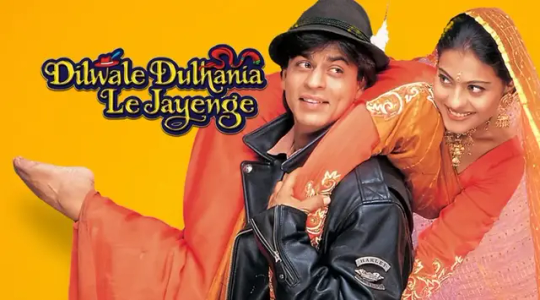
This film was released on October 20, 1995, and it not only became the highest-grossing Hindi film that year but also the most memorable film of Shah Rukh Khan and Kajol's careers. Dilwale Dulhaniya Le Jayenge added a feather to Shah Rukh Khan's hat, collecting INR 53.31 Crore net in India and INR 102.02 Crore gross worldwide. If we adjust inflation the film definitely had crossed INR 800 Crore net in 2023. 4. Khalnayak (1993)
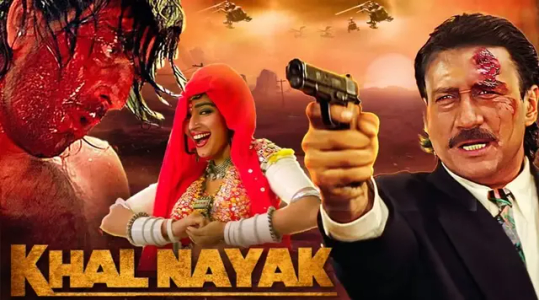
This Sanjay Dutt starer came as a game changer in his career, released on June 15, 1993. The film also stars Jackie Shroff in the lead role. This action-crime film racked up INR 12.5 Crore net in India and INR 21.5 Crore gross worldwide, creating mayhem at the box office. If Khalnayak were released in 2023 it would have collected INR 210 Crore net. 5. Baazigar (1993)
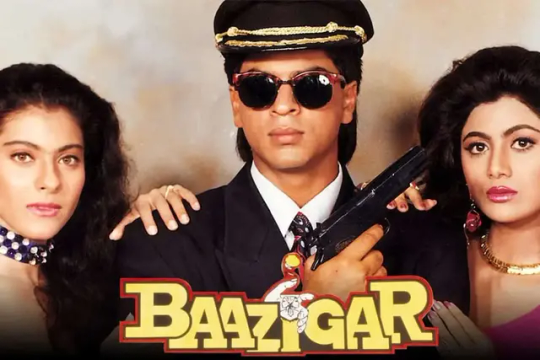
The iconic duo Shah Rukh Khan and Kajor appeared in Abbas-Mustan's Baazigar which was an unofficial remake of the Hollywood film A Kiss Before Dying, released on November 12, 1993. The film received a blockbuster verdict for its commercial success, collecting INR 14 Crore net in India and INR 32 Crore gross worldwide. Baazigar's equivalent box office collection in 2023 is INR 230 Crore. 6. Raja Hindustani (1996)

Raja Hindustani was a romantic drama film released on November 15, 1996, starring Aamir Khan and Karishma Kapoor. If we talk about Raja Hindustani's verdict at the box office, it was an out-n-out success story because the film was made on a budget of INR 5.75 crore and it collected INR 43.15 Crore net in India and INR 76.34 Crore worldwide to become the highest-grossing film of that year and the third most successful Hindi film of the 1990s. If we adjust inflation Raja Hindustani would collect INR 800 Crore net in 2023. 7. Main Khiladi Tu Anari (1994)
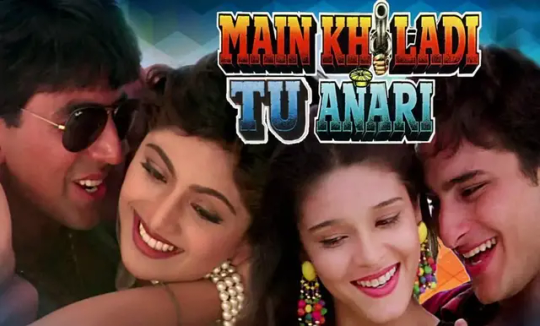
Main Khiladi Tu Anari was released in 1994, starring Akshay Kumar and Saif Ali Khan in lead roles. This comedy-action film was a sure-shot blockbuster of the year and one of the top 5 highest-grossing films of that year. In India, Main Khiladi Tu Anari collected INR 7.88 Crore net and INR 13.84 Crore worldwide. The inflation-adjusted box office collection of Main Khiladi Tu Anari in 2023 should be INR 200 Crore. 8. Gadar: Ek Prem Katha (2001)
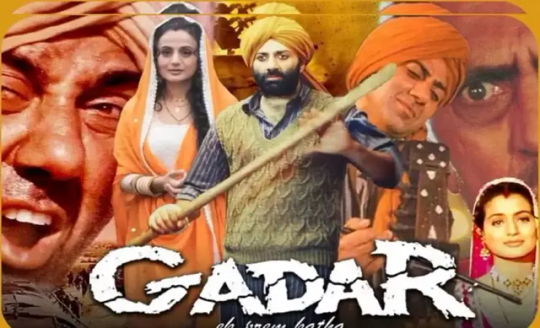
An Anil Sharma film, Gadar: Ek Prem Katha, released on June 15, 2001, was a tsunami at the box office, collecting INR 76.88 Crore Net in India and INR 111.73 Crore Gross worldwide. Over 5 crore people watched the film in theaters. It would be 2023 instead of 2001, and the equivalent box office collection of Gadar: Ek Prem Katha would rack over INR 500 Crore 9. Amar Akbar Anthony (1977)
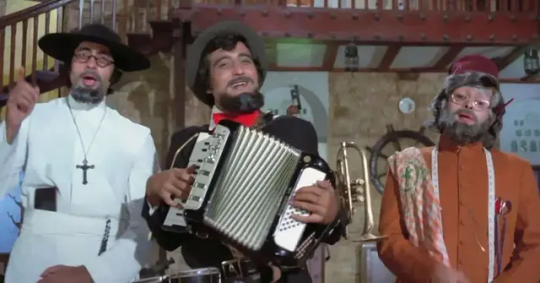
This film starring top actors of the Hindi Film Industry, Amitabh Bachchan, Rishi Kapoor, and Vinod Khanna, in the lead roles, was released on May 27, 1977, and is regarded as one of the most iconic films of Bollywood. Amar Akbar Anthony was the highest-grossing film of that year, collecting INR 7.5 Crore net in India and INR 15.5 Crore gross worldwide. Inflation adjusted box office collection of Amar Akbar Anthony is INR 450 Crore. 10. Dilwale (1994)
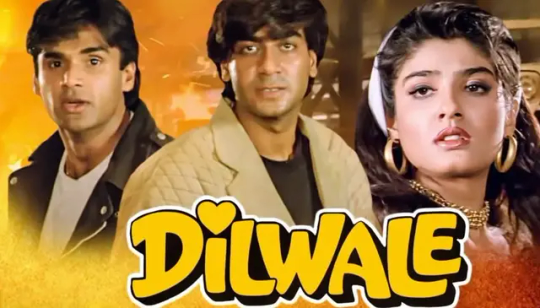
It was a romantic-action film, featuring Ajay Devgn and Sunil Shetty in lead roles. Dilwale was released in theaters on February 4, 1994. The film made on a budget of INR 2 Crore, did a business of INR 8.5 Crore net in India and INR 12 Crore gross worldwide, proven to be a Superhit film in Ajay Devgn's early career. If Dilwale were released in 2023, its box office collection would be INR 300 Crore instead.
FAQs:-
Which Is The All-Time Highest Grossing Film of Bollywood? Aamir Khan starrer Dangal is the all-time highest-grosser film of Bollywood. Dangal did a business of INR 2023.81 Crore gross worldwide. To note, Dangal collected over INR 1000 Crore solely in China. Baahubali 2: The Conclusion is at two with INR 1810.595 Crore gross worldwide collection. Which Is The Highest Grossing Film of Bollywood In 2023? The action-thriller film Jawan starring Shah Rukh Khan in the lead role, directed by Atlee, is the highest-grossing film of 2023. Jawan released on September 7, 2023, collected INR 1148.32 Crore gross worldwide. Read the full article
#InflationAdjustedBoxOfficeCollection#InflationAdjustedBoxOfficeCollectionofDDLJ#InflationAdjustedBoxOfficeCollectionOfGadarEkPremKatha#InflationAdjustedBoxOfficeCollectionofMainePyarKiya
2 notes
·
View notes
Text
Aamir-Karisma gave a 1-minute kissing scene in the cold, took 47 takes, then got the perfect shot after 3 days
Raja Hindustani long kissing scene story- The film ‘Raja Hindustani’, released in 1996, rocked the box-office. Theaters were houseful for this film for months. Be it the tremendous story line of this film or the strong acting or the songs which are remembered even today, everything had won the hearts of the audience. You must remember the famous kissing scene of this film. So let’s tell some…

View On WordPress
2 notes
·
View notes
Text
The Songs of Kahin Pyaar Na Ho Jaaye: A Musical Journey
The soundtrack of Kahin Pyaar Na Ho Jaaye (2000) holds a special place in the hearts of Bollywood music lovers. Composed by Himesh Reshammiya, the album is a vibrant blend of soulful melodies and peppy numbers that perfectly mirror the film's emotional rollercoaster. These tracks continue to resonate with fans who appreciate music that combines heartfelt lyrics and unforgettable tunes.

At Ruh Radio (1440 AM), we frequently feature these classics, reminding listeners of an era when Bollywood music was at its peak. Let’s dive into some of the standout songs from this evergreen album.
1. Kahin Pyaar Na Ho Jaaye (Title Track)
The title track is an emotional melody brought to life by the soulful voices of Kumar Sanu and Alka Yagnik. It perfectly captures the bittersweet anticipation of falling in love, making it a quintessential Bollywood love song. The mellow tune and heartfelt lyrics have made it a favorite request at Ruh Radio during our "Golden Hour" on 1440 AM.
2. Saawariya Saawariya
Saawariya is a lively and festive track sung by Alka Yagnik and Sonu Nigam. Its energetic beats and celebratory vibe make it a popular choice for weddings and other joyous occasions. The song showcases the playful chemistry between the film’s lead characters, perfectly blending fun and romance. At Ruh Radio, this track brings infectious energy to our weekend special playlists.
3. Dhintara Dhintara
This song is pure Bollywood masala, featuring an infectious rhythm and a captivating mix of traditional and modern beats. Sung by Sonu Nigam and Alka Yagnik, Dhintara is the go-to track for anyone looking to dance their heart out. The vibrant dhol beats make it a listener favorite, especially during festive episodes on Ruh Radio.
4. Pardesi Pardesi
Not to be confused with the Raja Hindustani track of the same name, this song brings a distinct flair to the album. Sung by Kumar Sanu and Alka Yagnik, it’s a heartfelt ode to longing and separation, with a melody that tugs at the heartstrings. At Ruh Radio, we often play this track during our late-night shows, perfect for listeners seeking solace in music.
5. O Priya O Priya
Arguably one of the most memorable tracks of the album, O Priya O Priya is a romantic duet by Udit Narayan and Alka Yagnik. Its soft, dreamy tune and evocative lyrics capture the magic of love in its purest form. It remains a hit among Ruh Radio listeners, especially during our “Timeless Romance” segment on 1440 AM.
6. Parody Song
A quirky and fun addition to the album, the Parody Song cleverly blends humor with melody. Sung by Salman Khan and a mix of other voices, this track is a playful nod to classic Bollywood songs, adding a dose of humor to the film’s narrative. At Ruh Radio, we play this track during our “Bollywood Nostalgia” segment, delighting listeners who enjoy lighthearted entertainment.
Why Kahin Pyaar Na Ho Jaaye Stands Out
The album reflects Himesh Reshammiya’s ability to craft music that appeals to a wide audience. Whether it’s the soul-stirring romance of O Priya O Priya or the infectious energy of Dhintara, each song has its own unique charm. With powerful vocals and meaningful lyrics, the soundtrack remains a fan favorite decades after its release.
Relive the Magic on Ruh Radio (1440 AM)
At Ruh Radio, we believe that great music transcends time. That’s why we keep the magic of albums like Kahin Pyaar Na Ho Jaaye alive on 1440 AM. Tune in to hear these timeless tracks and let the music take you back to an era of unforgettable melodies.
Follow us on Facebook and Instagram.
0 notes
Text
Karisma Kapoor gets PM Modi’s autograph for her children
Bollywood actress Karisma Kapoor, who is known for ‘Andaz Apna Apna’, ‘Coolie No.1’, ‘Raja Hindustani’ and others, recently met PM Narendra Modi in Delhi with her family, and received a signed autograph from the PM for her children. On Wednesday, the actress took to her Instagram, and shared the pictures from the Kapoor family’s meeting with the PM. The family, which is considered the first film…
0 notes
Text
Timeless Nadeem-Shravan Hits That Defined Bollywood Romance
The 1990s were a golden era for Bollywood music, and much of that glory can be attributed to the genius of Nadeem-Shravan. The legendary duo, comprising Nadeem Akhtar Saifi and Shravan Kumar Rathod, revolutionized Bollywood’s musical landscape with their soulful melodies, romantic ballads, and a unique ability to evoke deep emotions through their compositions. Their music not only dominated charts but also became the soundtrack of life for millions of fans during that decade.
This article delves into how Nadeem-Shravan redefined Bollywood music in the 1990s, exploring their innovative approach, chart-topping successes, and lasting legacy.
The Birth of a Phenomenon
Nadeem-Shravan first rose to prominence with the blockbuster soundtrack of Aashiqui in 1990. This album, a romantic masterpiece, marked a turning point for Bollywood music. At a time when Bollywood was experimenting with various musical styles, Nadeem-Shravan brought back the charm of melody. Their compositions in Aashiqui were simple yet profound, with tracks like “Dheere Dheere Se” and “Nazar Ke Saamne” striking an emotional chord with audiences.
This success was no accident. The duo’s roots in Indian classical music combined with their understanding of contemporary trends made them stand out. They carefully crafted each tune, ensuring it appealed to both traditional and modern sensibilities. Aashiqui not only cemented their place in Bollywood but also became a cultural phenomenon, influencing a generation of music lovers.
Signature Style: A Blend of Tradition and Modernity
One of the defining features of Nadeem-Shravan’s music was their seamless blending of traditional Indian melodies with modern instrumentation. Their songs often featured lush orchestration, with violins, sitars, and flutes complementing contemporary beats. This fusion created a sound that was both nostalgic and fresh.
Another hallmark of their style was the emotional depth in their compositions. Whether it was a song of heartbreak like “Jab Koi Baat Bigad Jaye” (Jurm) or a celebration of love like “Pehla Pehla Pyar Hai” (Hum Hain Rahi Pyar Ke), their music spoke directly to the heart. This emotional resonance became a trademark of their work and contributed to their immense popularity.
Chart-Topping Successes
The 1990s were dominated by Nadeem-Shravan’s chart-topping soundtracks. After the success of Aashiqui, they followed up with a string of hits that solidified their reputation as Bollywood’s go-to music directors. Some of their most memorable works include:
Dil Hai Ke Manta Nahin (1991): Tracks like “Dil Hai Ke Manta Nahin” and “O Mere Sapno Ke Saudagar” became instant classics.
Saajan (1991): Featuring iconic songs like “Bahut Pyar Karte Hain” and “Dekha Hai Pehli Baar,” this album was a runaway success.
Deewana (1992): This soundtrack introduced a young Shah Rukh Khan to the industry, with songs like “Teri Umeed Tera Intezaar” becoming evergreen hits.
Raja Hindustani (1996): Songs such as “Pardesi Pardesi” and “Aaye Ho Meri Zindagi Mein” showcased their versatility and knack for storytelling through music.
Each album had its distinct flavor, yet all bore the unmistakable stamp of Nadeem-Shravan’s melodic genius.
Collaborations That Defined an Era
Nadeem-Shravan’s success was bolstered by their collaborations with some of Bollywood’s finest lyricists and playback singers. Working with lyricists like Sameer and Anand Bakshi, they created songs that were as impactful in words as they were in melody. Their partnership with singers such as Kumar Sanu, Alka Yagnik, Udit Narayan, and Kavita Krishnamurthy led to the creation of iconic duets that became the soundtrack of Bollywood romance.
Kumar Sanu, in particular, became synonymous with the Nadeem-Shravan sound. Tracks like “Mera Dil Bhi Kitna Pagal Hai” (Saajan) and “Tum Dil Ki Dhadkan Mein” (Dhadkan) were brought to life by Sanu’s emotive singing. These collaborations not only produced memorable music but also elevated the careers of everyone involved.
A Legacy of Timeless Romance
The music of Nadeem-Shravan continues to resonate with audiences even decades after their peak. Their soundtracks were not just collections of songs but cohesive albums that complemented the narratives of the films they were part of. They understood the emotional core of the stories they worked on and used their music to amplify it.
The romantic melodies of Nadeem-Shravan became synonymous with Bollywood’s portrayal of love. Their songs were often the defining moments of the films they featured in, encapsulating the joy, pain, and passion of romance in ways that words alone could not.
Impact on the Bollywood Music Industry
Nadeem-Shravan’s influence on Bollywood music cannot be overstated. At a time when the industry was moving towards Western-inspired beats and disco music, they brought back the focus on melody and storytelling. Their success paved the way for other composers to experiment with romantic and emotional themes, leading to a renaissance of melody-driven music in Bollywood.
Furthermore, their popularity helped establish T-Series as a dominant force in the music industry. The collaboration between Nadeem-Shravan and T-Series set a benchmark for the production and marketing of Bollywood soundtracks.
Challenges and Triumphs
While their career was marked by immense success, it was not without its challenges. The duo faced controversies and setbacks, including legal troubles and personal disputes. Despite these obstacles, their music remained a constant source of inspiration for fans. Their ability to adapt and evolve ensured their place in Bollywood history.
Conclusion: A Lasting Legacy
Nadeem-Shravan contribution to Bollywood music goes beyond their hit songs and chart-topping albums. They redefined the sound of an era, creating music that transcended time and trends. Their work continues to inspire new generations of music lovers and composers, proving that true artistry is timeless.
As we reflect on the duo’s incredible journey, it becomes evident that their music was more than just entertainment — it was an expression of love, emotion, and the human experience. Nadeem-Shravan will always be remembered as the pioneers who brought melody back to Bollywood, leaving an indelible mark on the industry and in the hearts of their fans.
0 notes
Text
Aamir Khan-Karisma Kapoor’s Raja Hindustani kiss was shot over three days, her mom Babita was present throughout https://indianexpress.com/article/entertainment/bollywood/aamir-khan-karisma-kapoors-raja-hindustani-kiss-was-shot-over-three-days-her-mom-babita-was-present-throughout-9663925/
0 notes
Text


Karishma Kapoor in Raja Hindustani (1996)
#bollywood#bollywood2#karishma kapoor#karisma kapoor#karishmakapoor#rajahindustani#cinema#hindi#movie#india#moviegifs#filmedit#bollywoodedit#movieedit#indian cinema#dailyworldcinema#bollywoodgifs#mine
156 notes
·
View notes
Text
28 साल पहले आई आमिर खान की वो फिल्म, जिसके किसिंग सीन की शूटिंग 72 घंटे तक चली थी
28 Years of Raja Hindustani: बॉलीवुड एक्टर आमिर खान ने अपने करियर में कई सारी फिल्मों में काम किया. वे करियर की शुरुआत से ही एक चॉकलेटी एक्टर के तौर पर जाने जाते थे. रोमांटिक रोल्स करते थे. शुरुआती दौर में उनकी कई सारी रोमांटिक फिल्में काफी चलीं. इसमें राजा हिंदुस्तानी फिल्म का नाम भी शामिल है. इस फिल्म में एक्टर के अपोजिट करिश्मा कपूर नजर आई थीं. करिश्मा के साथ आमिर की केमिस्ट्री को खूब पसंद…
0 notes
Text
Pardesi Pardesi Lyrics - Raja Hindustani | Kumar Sanu
#PardesiPardesi #RajaHindustani #OldISGold #NadeemShravan #Sameer #KumarSanu #AlkaYagnik

View On WordPress
#Aamir Khan#Alka Yagnik#Karisma Kapoor#Kumar Sanu#Nadeem - Shravan#Raja Hindustani#Sameer#Tips Music
1 note
·
View note
Text
Did Aamir Khan Really Drink Alcohol During the Iconic Song from 'Raja Hindustani'? Archana Puran Singh Reveals
The 1996 film Raja Hindustani, starring Aamir Khan and Karisma Kapoor, was a massive hit, solidifying the careers of both stars. One song in particular, ‘Tere Ishq Mein Naachenge,’ became the center of speculation, with rumors circulating that Aamir Khan had actually consumed alcohol to bring authenticity to his performance in the scene. In a recent interview, Archana Puran Singh, who played a…

View On WordPress
0 notes
Text
Musical Instruments 2024

Musical Instruments
Musical instrument to produce melodies are known as musical instruments.
The way they make sound divides them into four families: wind (such as the flute and trumpet) instruments, which use air flow to produce sound; percussion (such as drums and xylophones) instruments, which use striking or shaking; and keyboard (such as the piano and organ) instruments, which combine elements of both wind and string instruments.
The distinctive design and playing style of each instrument add to the vast range of tones and genres present in music throughout the world.
There are four major traditional categories of musical instruments according to the type of instrument and natya shastra involved.
Bound instrument
These are membranophonic Musical Instruments because they have an outer membrane through which they are struck to produce a particular musical sound.
They are also known as blow instruments because they are struck to produce musical sounds. They have one or two sides covered with skins or leather. Dundubhi is also the oldest land in this range. Included in this category are the musical instruments like tabla, drum, dhol, Congo, mridang, etc. While tabla is the accompaniment of most Hindustani classical vocal music, mridang, mridang, mridang, etc.
https://indradigi.com/wp-content/uploads/2024/08/Wind-instrument.webp
These are of the airphone category i.e. they include all air instruments, the most common Musical Instruments include flute to barber, pungi etc. The most common but difficult to play instrument in this category is the clarinet. It is an air instrument difference with a double tube with a wide tube on the head. It is one of the oldest instruments in India.
The high title of Shehnai Raja was given to the great Ustad Bismillah Khan. Through his soulful playing he took the Shehnai to its climax One of the most common instruments that can be found in every household is the flute which has been in use since the Vedic period. Initially called a Nadi or tunao, it became a revered object when the image of Lord Krishna playing the flute became a symbol of the Hindu imagination. One of the most famous flute players of India is Pandit Hariprasad Chaurasia.
Cube instrument
This is the style of no drum stroke instrument which does not require any tuning, they are also called Indio phones, popular examples from the body of Dhanwad, Manjira, Jal Taran, Glass, Tarang, Ghungroo Ghatam Kartal etc. Manjira or Chhang is a small brass chanj, it is used in temples, archaeological excavations have found Manjira to be as old as the Harappan civilization.
CardoPhon
These cards are the phone or string middle Musical Instruments. They produce the most effective music when modified by hand in the sound. There are three types of musical instruments. Arched instruments in which the sound is produced by blowing a bow across the strings.
For example, the violin, the Asar, the heart, the Ruba, and the violin. Placattrorl: Instruments in which strings are drawn with the fingers or strings or horns, for example, sitar, veena, tanpura, guitar, etc., India gave birth to many of the best artists in the field of musical instruments. The Bangus family is considered to be among the 20th century Agardoots, there are many gharanas playing the sitar, for example Jaipur, Varanasi, Etawah gharana.
https://indradigi.com/wp-content/uploads/2024/08/Cardophon.webp
Dulcimer
There are 100 stringed Musical Instruments and the traditional instrument of Jammu and Kashmir since ancient times, Sufiana Kalam is the accompaniment of santur with music.
Folk musical instruments
The stringed Musical Instruments tum is also played during pangana in this Punjab. A Tara It is a stringed Musical Instruments played by wandering sadhus Two Tara A two-stringed instrument played by Bahul. Chikara bent yantra is used in Rajasthan,
Uttar Pradesh and Madhya Pradesh, Dilruba or israj in Punjab and in eastern India is used for accompaniment by Rabindra Sangeet Onavallu is made of bamboo in Kerala. Sarida, an important tribal instrument, is played by the Santhals in the inter-eastern India. It is also used in Rajasthan and Assam. It is like the sarangi.
https://indradigi.com/wp-content/uploads/2024/08/Folk-musical-instruments.jpeg
Musical instrument played with blow Pungi or Bin It is used by snake charmers made by dried taurai and two bamboo sticks or. Algoja consists of two flutes and is popular as a folk music instrument in the northwestern India, especially in Punjab.
Tangmuri is a folk music instrument of the people of the Khasi hill region of Meghalaya. Titti It is similar to a bagpiper and is made from goat skin. The head is an important folk music instrument of Rajasthan and Uttar Pradesh, targeted at Garhwal in Uttarakhand, and is made of bamboo and used in the Vihu festival of Assam. And it is played in the Ganesh festival in Goa.
Idakka It is like a Damrau and is used in Kerala Urdu kai It is a sand-shaped Damrau-like difference in Tamil Nadu Sambhal It is like a drum It is protected by sticks in the Konkan region of Maharashtra. This is an important two-headed musical instrument of the Dhamak Sansthan tribe played with drums trucks. The percussive musical instruments that produce the sound of the tongs evolved from the tongs used in fire and are used in Punjab Diggi is a folk dholak from. Ghadiya village in Uttar Pradesh.
The pot is made of pottery. It is used in the folk music of Punjab. Andel is used in Katha Kirtan. It is made of two circular hollow rings of metal.
Modern developments in music
The process of development of music has been endless since its inception In the twentieth twenty-first century, many attempts have been made for the rapid development of the music industry. There are institutions that teach music to students and provide them with an educational background in the subject.
Gandharva Mahavidyalaya
V.D Paluskar established this school in 1901 with the express objective of teaching and transmitting knowledge of Indian cultural music and dance to future generations. Initially opened in Lahore, it shifted to Mumbai in 1915. The college focuses on Hindustani and Carnatic classical forms of music.
Prayag Sangeet Samiti
It was established in 1926 in Allahabad to impart education in Hindustani classical music.
Sangeet Natak Academy
The Sangeet Natak Academy was the first national academy for the arts established by the Government of India in 1952. The Academy focuses on creating systems for the sustainability of musical drama in India, in that it is expected to be the primary marriage for the performing arts in the country. It is also expected to promote the vast intangible heritage of India performed through forms of music, dance and drama.
Marish Music College
It is one of the premier institutions for studying classical music in India. Aries was founded in 1920 by the great musician Vishnu Narayan Bhatkhande. He moved back to his native place Lucknow to establish this school. It focuses on the theory of music as well as the practice of singing and playing instruments. Later it was named as Bhatkhande Music Institute
Spic Macay
Kiran Seth founded the Spic Macay Community in 1977. The full name of the organization is Society for the Promotion of Indian Classical Music and Culture among the Youth. It started as a Samavaikal Youth Movement. The core of this organization is to promote Indian classical music, dance, yoga, meditation and other aspects of Indian culture as a platform for the younger generation to showcase the culture of India.It targets the common people and youth by organizing many free entry programs and gradually it has become a gigantic organization with a large number of branches all over the world.
Chatur Prahar
Yeh Hai is an annual classical music festival held at the National Centre for the Arts in Mumbai, based on the concept of Rago and time affiliation.
Conclusion
Musical instruments are indispensable instruments of human expression that cut across all cultural and temporal barriers. They stimulate creativity and emotional connection by bringing melodies, rhythms, and harmonies to life. Every Musical Instruments, whether it be a modern electric guitar or a traditional Saraswati Veena, has a distinct sound and cultural significance. The fundamental function of musical instruments has not changed over time—that is, to convey and arouse feelings—despite technological advancements and shifts in artistic expression. Around the world, people are still inspired, amused, and brought together by musical instruments, whether they are played by a single performer or an orchestra.
0 notes
Text
Explore 12 Stunning Malabaleshwar Locations for Your Next Creative Shoot
The “Queen of Hill Stations,” Malabaleshwar, is more than simply a honeymooners’ and nature lovers’ paradise. Big names in Bollywood love to shoot there because of its gorgeous scenery, quaint colonial buildings, and tranquil atmosphere. But fear not, those who want to create stuff! These breathtaking locales are not just for movie sets.
Make your way to these enchanted locations with SceneLoc8, and become the star of your own pre-wedding photo session, adventurous photo shoot, visually stunning music video, or engaging vlog.
Here are 12 amazing Malabaleshwar locales that you must see in order to get inspired for your next creative endeavor:
One Tree Hill (Raja Hindustani)
Relive the electrifying chemistry between Karisma Kapoor and Aamir Khan. This famous location, which features a lone, stately tree that overlooks the valley, is ideal for a couple’s portrait or a romantic pre-wedding picture. Imagine snapping pictures against this gorgeous backdrop, catching the golden glow of dawn or dusk. This is a great place for vloggers to construct a beautiful opening or a meaningful statement.
Venna Lake (Satyameva Jayate)
Venna Lake’s calm beauty can help you find inner serenity. Make a symbolic video about John Abraham’s vigilante attitude, or use the beautiful atmosphere of the lake for a calm pre-wedding photo shoot. This gorgeous location is ideal for shooting a moving music video or stunning landscape shots.
Arthur’s Seat Point (Aankhen)
Adrenaline junkies, unite! Visit the location where Akshay Kumar filmed the thrilling pursuit scene in Aankhen to get your heart pounding. The exhilarating Arthur’s Seat slopes are perfect for daring pre-wedding photos or high-action vlogs.
Wilson Point (Singham)
Take wide-angle photos exactly like Ajay Devgn in Singham. Wilson Point’s spectacular 360-degree vistas make it the ideal location for dramatic music videos or exquisite landscape photography. Imagine having an endless sky and rolling hills as the backdrop for your pre-wedding photos. This place is perfect for establishing shots and beautiful drone footage for vloggers.
Mahabaleshwar Temple (A Gentleman)
Accept the diversity of Malabaleshwar’s culture. The Mahabaleshwar Temple’s elaborate architecture and ethereal atmosphere make it a memorable location for pre-wedding portraits, engagement photos, or even a traditional music video. Vloggers can learn about the local way of life and delve into the history of the temple.
Strawberry Fields (Yeh Jawaani Hai Deewani)
Let strawberry fields’ vivid red hues bloom with affection. Pre-wedding photos inspired by Yeh Jawaani Hai Deewani, starring Deepika Padukone and Ranbir Kapoor, can capture the beauty of adolescent affection. Vloggers can produce a pleasant travelogue or an enjoyable culinary journey while visiting nearby strawberry farms.
Polo Grounds (ABCD 2)
Bring out the dancing in you! The colonial-styled historic Polo Grounds provided the backdrop for the exciting dancing scenes in ABCD 2. This setting provides a distinctive fusion of modern and historical emotions, making it ideal for a funny pre-wedding photography, dancing music video, or interesting vlog about Malabaleshwar’s best-kept secrets.
Pratapgad Fort (Baahubali: The Beginning)
Bring out the warrior in you! Though some scenes were not totally filmed at Malabaleshwar, Baahubali made use of the magnificent Pratapgad Fort. A dramatic music video, a vlog highlighting the area’s rich Maratha heritage, or a historical pre-wedding shoot would all benefit from the fort’s impressive construction.
Lingmala Waterfall (Mardaani 2)
Accept the force of nature! The dramatic setting of Lingmala Waterfall, where Rani Mukerji shot Mardaani 2, is perfect for a pre-wedding photo session, a mysterious music video, or a vlog that highlights Malabaleshwar’s unadulterated beauty.
Pasarni Ghat (Satte Pe Satta)
Relive the timeless romance between Hema Malini and Amitabh Bachchan. With its breathtaking views of the valley, the colorful Pasarni Ghat is ideal for a traditional pre-wedding photo session or a music video that pays homage to the golden era of Bollywood. Vloggers can explore the local flora and animals and record the visual magnificence of the ghat from this spot.
Mahabaleshwar Market (Lootcase)
Taste the colourful excitement of Malabaleshwar. The vibrant Mahabaleshwar Market, featured in Lootcase, as a great setting for pre-wedding photos or a vlog that explores the local retail scene. Imagine filming unguarded moments of vloggers enjoying some delectable street food or couples haggling over souvenirs.
Bombay Point (Various Films)
Accept the expansive splendor! Filmmakers frequently choose Bombay Point for establishing shots since it provides amazing vistas of the surrounding hills and valleys. This gorgeous setting is ideal for grandiose pre-wedding portraits, expansive landscape shots, or vlogs that highlight Malabaleshwar’s splendor from an alternative viewpoint.
Bonus Tip: Discover even more undiscovered treasures in Malabaleshwar by using SceneLoc8! This cutting-edge platform makes it easy to find distinctive places that precisely fit your creative vision by allowing you to search for filming locations depending on your exact needs.
Remember: Please show consideration for the locals and the environment when filming at any of these locations. If required, obtain the appropriate permits, and make sure you travel responsibly at all times.
So, why do you hesitate? Bring your imagination, seize your camera, and make your way to Malabaleshwar. You may turn these popular locations in Bollywood into the backdrop for your next masterpiece by using SceneLoc8 as a guide!
Adventure Vlog Locations, Bollywood Locations Guide, Bollywood Shooting Spots, Creative Photo Shoot Ideas, Dance Shoot, film shooting, Mahabaleshwar Photography, Mahabaleshwar Travel, Malabaleshwar Filming Locations, music videos, Photography Shoot, pre-wedding shoot, pre-wedding shoot locations, SceneLoc8 Travel Guide, SceneLoc8.com, Scenic Music Video Spots, Vlogging, Voxpop Places
Follow Our Whatsapp Channel:
@SceneLoc8 India
@SceneLoc8 Mumbai
#Adventure Vlog Locations#Bollywood Locations Guide#Bollywood Shooting Spots#Creative Photo Shoot Ideas#Dance Shoot#film shooting#Mahabaleshwar Photography#Mahabaleshwar Travel#Malabaleshwar Filming Locations#music videos#Photography Shoot#pre-wedding shoot#pre-wedding shoot locations#SceneLoc8 Travel Guide#SceneLoc8.com#Scenic Music Video Spots#Vlogging#Voxpop Places
0 notes